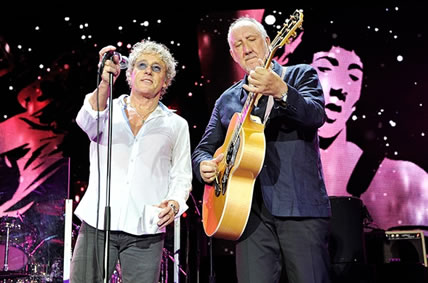Are an English rock band that formed in 1964. Their classic line-up consisted of lead singer Roger Daltrey, guitarist and singer Pete Townshend, bass guitarist John Entwistle, and drummer Keith Moon. They are considered one of the most influential rock bands of the 20th century, selling over 100 million records worldwide and holding a reputation for their live shows and studio work.
The Who developed from an earlier group, the Detours, and established themselves as part of the pop art and mod movements, featuring auto-destructive art by destroying guitars and drums on stage. Their first single as the Who, “I Can’t Explain”, reached the UK top ten, followed by a string of singles including “My Generation”, “Substitute” and “Happy Jack”. In 1967, they performed at the Monterey Pop Festival and released the US top ten single “I Can See for Miles”, while touring extensively. The group’s fourth album, 1969’s rock opera Tommy, included the single “Pinball Wizard” and was a critical and commercial success.
Live appearances at Woodstock and the Isle of Wight Festival, along with the live album Live at Leeds, cemented their reputation as a respected rock act. With their success came increased pressure on lead songwriter and visionary Townshend, and the follow-up to Tommy, Lifehouse, was abandoned. Songs from the project made up 1971’s Who’s Next, which included the hit “Won’t Get Fooled Again”. The group released the album Quadrophenia in 1973 as a celebration of their mod roots, and oversaw the film adaptation of Tommy in 1975. They continued to tour to large audiences before semi-retiring from live performances at the end of 1976. The release of Who Are You in 1978 was overshadowed by the death of Moon shortly after.
Kenney Jones replaced Moon and the group resumed activity, releasing a film adaptation of Quadrophenia and the retrospective documentary The Kids Are Alright. After Townshend became weary of touring, the group split in 1982. The Who occasionally re-formed for live appearances such as Live Aid in 1985, a 25th anniversary tour in 1989 and a tour of Quadrophenia in 1996–1997. They resumed regular touring in 1999, with drummer Zak Starkey. After Entwistle’s death in 2002, plans for a new album were delayed. Townshend and Daltrey continued as the Who, releasing Endless Wire in 2006, and continued to play live regularly.
The Who’s major contributions to rock music include the development of the Marshall stack, large PA systems, use of the synthesizer, Entwistle and Moon’s lead playing styles, Townshend’s feedback and power chord guitar technique, and the development of the rock opera. They are cited as an influence by hard rock, punk rock and mod bands, and their songs still receive regular exposure.
Background
The founding members of the Who, Roger Daltrey, Pete Townshend and John Entwistle, grew up in Acton, London and went to Acton County Grammar School. Townshend’s father, Cliff, played saxophone and his mother, Betty, had sung in the entertainment division of the Royal Air Force during World War II, and both supported their son’s interest in rock and roll. Townshend and Entwistle became friends in their second year of Acton County, and formed a trad jazz group; Entwistle also played French horn in the Midd lesex Schools’ Symphony Orchestra. Both were interested in rock, and Townshend particularly admired Cliff Richard’s début single, “Move It”. Entwistle moved to guitar, but struggled with it due to his large fingers, and moved to bass on hearing the guitar work of Duane Eddy. He was unable to afford a bass and built one at home.After Acton County, Townshend attended Ealing Art College,a move he later described as profoundly influential on the course of the Who.
Daltrey, who was in the year above, had moved to Acton from Shepherd’s Bush, a more working-class area. He had trouble fitting in at the school, and discovered gangs and rock and roll. He was expelled at 15 and found work on a building site. In 1959 he started the Detours, the band that was to evolve into the Who. The band played professional gigs, such as corporate and wedding functions, and Daltrey kept a close eye on the finances as well as the music.
Daltrey spotted Entwistle by chance on the street carrying a bass and recruited him into the Detours. In mid-1961, Entwistle suggested Townshend as a guitarist, Daltrey on lead guitar, Entwistle on bass, Harry Wilson on drums, and Colin Dawson on vocals. The band played instrumentals by the Shadows and the Ventures, and a variety of pop and trad jazz covers. Daltrey was considered the leader and, according to Townshend, “ran things the way he wanted them”. Wilson was fired in mid-1962 and replaced by Doug Sandom, though he was older than the rest of the band, married, and a more proficient musician, having been playing semi-professionally for two years.
Dawson left after frequently arguing with Daltrey and after being briefly replaced by Gabby Connolly, Daltrey moved to lead vocals. Townshend, with Entwistle’s encouragement, became the sole guitarist. Through Townshend’s mother, the group obtained a management contract with local promoter Robert Druce, who started booking the band as a support act. The Detours were influenced by the bands they supported, including Screaming Lord Sutch, Cliff Bennett and the Rebel Rousers, Shane Fenton and the Fentones, and Johnny Kidd and the Pirates. The Detours were particularly interested in the Pirates as they also only had one guitarist, Mick Green, who inspired Townshend to combine rhythm and lead guitar in his style. Entwistle’s bass became more of a lead instrument, playing melodies. In February 1964, the Detours became aware of the group Johnny Devlin and the Detours and changed their name. Townshend and his roommate Richard Barnes spent a night considering names, focusing on a theme of joke announcements, including “No One” and “the Group”. Townshend preferred “the Hair”, and Barnes liked “the Who” because it “had a pop punch”. Daltrey chose “the Who” the next morning.
1964–1978
Early career
By the time the Detours had become the Who, they had already found regular gigs, including at the Oldfield Hotel in Greenford, the White Hart Hotel in Acton, the Goldhawk Social Club in Shepherd’s Bush, and the Notre Dame Hall in Leicester Square. They had also replaced Druce as manager with Helmut Gorden, with whom they secured an audition with Chris Parmeinter for Fontana Records. Parmeinter found problems with the drumming and, according to Sandom, Townshend immediately turned on him and threatened to fire him if his playing did not immediately improve. Sandom left in disgust, but was persuaded to lend his kit to any potential stand-ins or replacements. Sandom and Townshend did not speak to each other again for 14 years.
During a gig with a stand-in drummer in late April at the Oldfield, the band first met Keith Moon. Moon grew up in Wembley, and had been drumming in bands since 1961. He was performing with a semi-professional band called the Beachcombers, and wanted to play full-time. Moon played a few songs with the group, breaking a bass drum pedal and tearing a drum skin. The band were impressed with his energy and enthusiasm, and offered him the job. Moon performed with the Beachcombers a few more times, but dates clashed and he chose to devote himself to the Who. The Beachcombers auditioned Sandom, but were unimpressed and did not ask him to join.
The Who changed managers to Peter Meaden. He decided that the group would be ideal to represent the growing mod movement in Britain which involved fashion, scooters and music genres such as rhythm and blues, soul and beat. He renamed the group the High Numbers, dressed them up in mod clothes, secured a second, more favorable audition with Fontana and wrote the lyrics for both sides of their single “Zoot Suit”/”I’m the Face” to appeal to mods. The tune for “Zoot Suit” was “Misery” by the Dynamics, and “I’m the Face” borrowed from Slim Harpo’s “I Got Love If You Want It”. Although Meaden tried to promote the single, it failed to reach the top 50 and the band reverted to calling themselves the Who. The group began to improve their stage image; Daltrey started using his microphone cable as a whip on stage, and occasionally leapt into the crowd; Moon threw drumsticks into the air mid-beat; Townshend mimed machine gunning the crowd with his guitar while jumping on stage and playing guitar with a fast arm-wind milling motion, or stood with his arms aloft allowing his guitar to produce feedback in a posture dubbed “the Bird Man”.
Meaden was replaced as manager by two filmmakers, Kit Lambert and Chris Stamp. They were looking for a young, unsigned rock group that they could make a film about, and had seen the band at the Railway Hotel in Wealdstone, which had become a regular venue for them. Lambert related to Townshend and his art school background, and encouraged him to write songs. In August, Lambert and Stamp made a promotional film featuring the group and their audience at the Railway. The band changed their set towards soul, rhythm and blues and Motown covers, and created the slogan “Maximum R&B”.
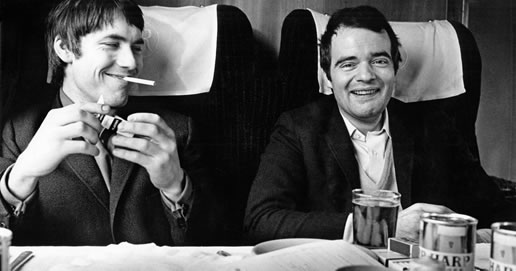
In June 1964, during a performance at the Railway, Townshend accidentally broke the head of his guitar on the low ceiling of the stage. Angered by the audience’s laughter, he smashed the instrument on the stage, then picked up another guitar and continued the show. The following week, the audiences were keen to see a repeat of the event. Moon obliged by kicking his drum kit over, and auto-destructive art became a feature of the Who’s live set.
First singles and My Generation
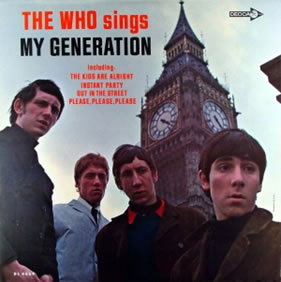 By late 1964, the Who were becoming popular in London’s Marquee club, and a rave review of their live act appeared in Melody Maker. Lambert and Stamp attracted the attention of the American producer Shel Talmy, who had produced the Kinks. Townshend had written a song, “I Can’t Explain”, that deliberately sounded like the Kinks to attract Talmy’s attention. Talmy saw the group in rehearsals and was impressed. He signed them to his production company, and sold the recording to the US arm of Decca Records, which meant that the group’s early singles were released in Britain on Brunswick Records, one of UK Decca’s labels for US artists. “I Can’t Explain” was recorded in early November 1964 at Pye Studios in Marble Arch with the Ivy League on backing vocals, and Jimmy Page played fuzz guitar on the B-side, “Bald Headed Woman”.
By late 1964, the Who were becoming popular in London’s Marquee club, and a rave review of their live act appeared in Melody Maker. Lambert and Stamp attracted the attention of the American producer Shel Talmy, who had produced the Kinks. Townshend had written a song, “I Can’t Explain”, that deliberately sounded like the Kinks to attract Talmy’s attention. Talmy saw the group in rehearsals and was impressed. He signed them to his production company, and sold the recording to the US arm of Decca Records, which meant that the group’s early singles were released in Britain on Brunswick Records, one of UK Decca’s labels for US artists. “I Can’t Explain” was recorded in early November 1964 at Pye Studios in Marble Arch with the Ivy League on backing vocals, and Jimmy Page played fuzz guitar on the B-side, “Bald Headed Woman”.
“I Can’t Explain” became popular with pirate radio stations such as Radio Caroline. Pirate radio was important for bands as there were no commercial radio stations in the UK and BBC Radio played little pop music. The group gained further exposure when they appeared on the television programmed Ready Steady Go! Lambert and Stamp were tasked with finding “typical teens”, and invited the group’s regular audience from the Goldhawk Social Club.Enthusiastic reception on television and regular airplay on pirate radio helped the single slowly climb the charts in early 1965 until it reached the top 10. The follow-up single, “Anyway, Anyhow, Anywhere”, by Townshend and Daltrey, features guitar noises such as pick sliding, toggle switching and feedback, which was so unconventional that it was initially rejected by the US arm of Decca. The single reached the top 10 in the UK and was used as the theme song to Ready Steady Go!
The transition to a hit-making band with original material, encouraged by Lambert, did not sit well with Daltrey, and a recording session of R&B covers went unreleased. The Who were not close friends either, apart from Moon and Entwistle, who enjoyed visiting nightclubs together in the West End of London.] The group experienced a difficult time when touring Denmark in September, which culminated in Daltrey throwing Moon’s amphetamines down the toilet and assaulting him. Immediately on returning to Britain, Daltrey was sacked, but was reinstated on the condition that the group became a democracy without his dominant leadership. At this time, the group enlisted Richard Cole as a roadie.
The next single, “My Generation”, followed in October. Townshend had written it as a slow blues, but after several abortive attempts, it was turned into a more powerful song with a bass solo from Entwistle. The song used gimmicks such as a vocal stutter to simulate the speech of a mod on amphetamines, and two key changes. Townshend insisted in interviews that the lyrics “Hope I die before I get old” were not meant to be taken literally. Peaking at No. 2, “My Generation” is the group’s highest-charting single in the UK.
The début album My Generation was released in late 1965. Among original material by Townshend, including the title track and “The Kids Are Alright”, the album has several James Brown covers from the session earlier that year that Daltrey favored.
After My Generation, the Who fell out with Talmy, which meant an abrupt end to their recording contract. The resulting legal acrimony resulted in Talmy holding the rights to the master tapes, which prevented the album from being reissued until 2002. The Who were signed to Robert Stigwood’s label, Reaction, and released “Substitute”. Townshend said he wrote the song about identity crisis, and as a parody of the Rolling Stones’s “19th Nervous Breakdown”. It was the first single to feature him playing an acoustic twelve-string guitar. Talmy took legal action over the B-side, “Instant Party”, and the single was withdrawn. A new B-side, “Waltz for a Pig”, was recorded by the Graham Bond Organization under the pseudonym “the Who Orchestra”.
In 1966 the Who released “I’m a Boy”, about a boy dressed as a girl, taken from an abortive collection of songs called Quads; “Happy Jack”; and an EP, Ready Steady Who, that tied in with their regular appearances on Ready Steady Go! The group continued to have conflict; on 20 May, Moon and Entwistle were late to a gig having been on the Ready Steady Go! set with The Beach Boys’ Bruce Johnston. During “My Generation”, Townshend attacked Moon with his guitar; Moon suffered a black eye and bruises, and he and Entwistle left the band, but changed their minds and rejoined a week later. Moon kept looking for other work, and Jeff Beck had him to play drums on his song “Beck’s Bolero” (with Page, John Paul Jones and Nicky Hopkins) because he was “trying to get Keith out of the Who”.
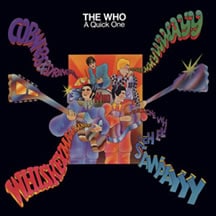 To alleviate financial pressure on the band, Lambert arranged a song-writing deal which required each member to write two songs for the next album. Entwistle contributed “Boris the Spider” and “Whiskey Man” and found a niche role as second songwriter. The band found they needed to fill an extra ten minutes, and Lambert encouraged Townshend to write a longer piece, “A Quick One, While He’s Away”. The suite of song fragments is about a girl who has an affair while her lover is away, but is ultimately forgiven. The album was titled A Quick One (Happy Jack in the US), and reached No. 4 in the UK charts. It was followed in 1967 by the UK Top 5 single “Pictures of Lily”.
To alleviate financial pressure on the band, Lambert arranged a song-writing deal which required each member to write two songs for the next album. Entwistle contributed “Boris the Spider” and “Whiskey Man” and found a niche role as second songwriter. The band found they needed to fill an extra ten minutes, and Lambert encouraged Townshend to write a longer piece, “A Quick One, While He’s Away”. The suite of song fragments is about a girl who has an affair while her lover is away, but is ultimately forgiven. The album was titled A Quick One (Happy Jack in the US), and reached No. 4 in the UK charts. It was followed in 1967 by the UK Top 5 single “Pictures of Lily”.
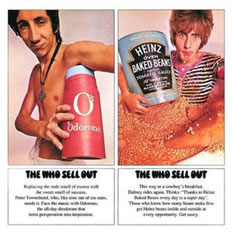 By 1966, Ready Steady Go! had ended, the mod movement was becoming unfashionable, and the Who found themselves in competition on the London circuit with groups including Cream and the Jimi Hendrix Experience.
By 1966, Ready Steady Go! had ended, the mod movement was becoming unfashionable, and the Who found themselves in competition on the London circuit with groups including Cream and the Jimi Hendrix Experience.
Lambert and Stamp realized that commercial success in the US was paramount to the group’s future, and arranged a deal with promoter Frank Barsalona for a short package tour in New York.
The group’s performances, which still involved smashing guitars and kicking over drums, were well received, and led to their first major US appearance at the Monterey Pop Festival.
The groups, especially Moon, were not fond of the hippie movement, and thought their violent stage act would stand in sharp contrast to the peaceful atmosphere of the festival.
Hendrix was also on the bill, and was also going to smash his guitar on stage.
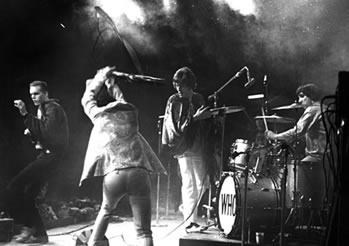
Townshend verbally abused Hendrix and accused him of stealing his act, and the pair argued about who should go on stage first, with the Who winning the argument. The Who brought hired equipment to the festival; Hendrix shipped over his regular touring gear from Britain, including a full Marshall stack. According to biographer Tony Fletcher, Hendrix sounded “so much better than the Who it was embarrassing”. The Who’s appearance at Monterey gave them recognition in the US, and “Happy Jack” reached the top 30.
The group followed Monterey with a US tour supporting Herman’s Hermits. The Hermits were a straightforward pop band and enjoyed drugs and practical jokes. They bonded with Moon, who was excited to learn that cherry bombs were legal to purchase in Alabama. Moon acquired a reputation of destroying hotel rooms while on tour, with a particular interest in blowing up toilets. Entwistle said the first cherry bomb they tried “blew a hole in the suitcase and the chair”. Moon recalled his first attempt to flush one down the toilet: “All that porcelain flying through the air was quite unforgettable. I never realized dynamite was so powerful.” After a gig in Flint, Michigan on Moon’s 21st birthday on 23 August 1967, the entourage caused $24,000 of damage at the hotel, and Moon knocked out one of his front teeth. Daltrey later said that the tour brought the band closer, and as the support act, they could turn up and perform a short show without any major responsibilities.
After the Hermits tour, the Who recorded their next single, “I Can See for Miles”, which Townshend had written in 1966 but had avoided recording until he was sure it could be produced well. Townshend called it “the ultimate Who record”, and was disappointed it reached only No. 10 in the UK. It became their best selling single in the US, reaching No. 9. The group toured the US again with Eric Burdon and the Animals, including an appearance on The Smothers Brothers Comedy Hour, miming to “I Can See For Miles” and “My Generation”.
Moon bribed a stage hand to put explosives in his drum kit, who loaded it with ten times the expected quantity. The resulting detonation threw Moon off his drum riser and his arm was cut by flying cymbal shrapnel. Townshend’s hair was singed and his left ear left ringing, and a camera and studio monitor were destroyed.
The next album was The Who Sell Out—a concept album paying tribute to pirate radio, which had been outlawed in August 1967 by the Marine, &c., Broadcasting (Offences) Act 1967. It included humorous jingles and mock commercials between songs,[86] a mini rock opera called “Rael”, and “I Can See For Miles”. The Who declared themselves a pop art group and thus viewed advertising as an artform; they recorded a wide variety of radio advertisements, such as for canned milkshakes and the American Cancer Society, in defiance of the rising anti-consumerist ethos of the hippie counterculture. Townshend stated, “We don’t change offstage. We live pop art.”[88]
Later that year, Lambert and Stamp formed a record label, Track Records, with distribution by Polydor. As well as signing Hendrix, Track became the imprint for all the Who’s UK output until the mid-1970s.
The group started 1968 by touring Australia and New Zealand with the Small Faces. The groups had trouble with the local authorities and the New Zealand Truth called them “unwashed, foul-smelling, booze-swilling no-hopers”. They continued to tour across the US and Canada during the first half of the year.
Tommy, Woodstock and Live at Leeds
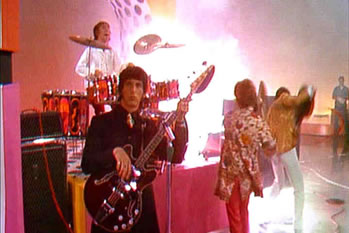
By 1968 the Who had started to attract attention in the underground press. Townshend had stopped using drugs and became interested in the teachings of Meher Baba.[95] In August, he gave an interview to Rolling Stone editor Jann Wenner describing in detail the plot of a new album project and its relationship to Baba’s teachings. The album went through several names during recording, including Deaf Dumb and Blind Boy and Amazing Journey; Townshend settled on Tommy[96] for the album about the life of a deaf, dumb and blind boy, and his attempt to communicate with others.[97][98] Some songs, such as “Welcome” and “Amazing Journey” were inspired by Baba’s teaching,[99] and others came from observations within the band. “Sally Simpson” is about a fan who tried to climb on stage at a gig by the Doors that they attended[100] and “Pinball Wizard” was written so that New York Times journalist Nik Cohn, a pinball enthusiast, would give the album a good review.[101] Townshend later said, “I wanted the story of Tommy to have several levels … a rock singles level and a bigger concept level”, containing the spiritual message he wanted as well as being entertaining. The album was projected for a Christmas 1968 release but recording stalled after Townshend decided to make a double album to cover the story in sufficient depth.[103]
By the end of the year, 18 months of touring had led to a well-rehearsed and tight live band, which was evident when they performed “A Quick One While He’s Away” at The Rolling Stones Rock and Roll Circus television special. The Stones considered their own performance lacklustre, and the project was never broadcast. The Who had not released an album in over a year, and had not completed the recording of Tommy, which continued well into 1969, interspersed with gigs at weekends. Lambert was a key figure in keeping the group focused and getting the album completed, and typed up a script to help them understand the story and how the songs fitted together.
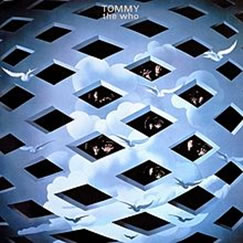 The album was released in May with the accompanying single, “Pinball Wizard”, a début performance at Ronnie Scott’s, and a tour, playing most of the new album live. Tommy sold 200,000 copies in the US in its first two weeks, and was a critical smash, Life saying, “… for sheer power, invention and brilliance of performance, Tommy outstrips anything which has ever come out of a recording studio”. Melody Maker declared: “Surely the Who are now the band against which all others are to be judged.” Daltrey had significantly improved as a singer, and set a template for rock singers in the 1970s by growing his hair long and wearing open shirts on stage. Townshend had taken to wearing a boiler suit and Doctor Martens shoes.
The album was released in May with the accompanying single, “Pinball Wizard”, a début performance at Ronnie Scott’s, and a tour, playing most of the new album live. Tommy sold 200,000 copies in the US in its first two weeks, and was a critical smash, Life saying, “… for sheer power, invention and brilliance of performance, Tommy outstrips anything which has ever come out of a recording studio”. Melody Maker declared: “Surely the Who are now the band against which all others are to be judged.” Daltrey had significantly improved as a singer, and set a template for rock singers in the 1970s by growing his hair long and wearing open shirts on stage. Townshend had taken to wearing a boiler suit and Doctor Martens shoes.
In August, the Who performed at the Woodstock Festival, despite being reluctant and demanding $13,000 up front. The group were scheduled to appear on Saturday night, 16 August, but the festival ran late and they did not take to the stage until 5am on Sunday; they played most of Tommy. During their performance, Yippie leader Abbie Hoffman interrupted the set to give a political speech about the arrest of John Sinclair; Townshend kicked him off stage, shouting: “Fuck off my fucking stage!” During “See Me, Feel Me”, the sun rose almost as if on cue; Entwistle later said, “God was our lighting man”. At the end, Townshend threw his guitar into the audience. The set was professionally recorded and filmed, and portions appear on the Woodstock film, The Old Grey Whistle Test and The Kids Are Alright.
Woodstock has been regarded as culturally significant, but the Who were critical of the event. Roadie John “Wiggie” Wolff, who arranged the band’s payment, described it as “a shambles”. Daltrey declared it as “the worst gig [they] ever played” and Townshend said, “I thought the whole of America had gone mad.” A more enjoyable appearance came a few weeks later at the second Isle of Wight Festival, which Townshend described as “a great concert for” the band.
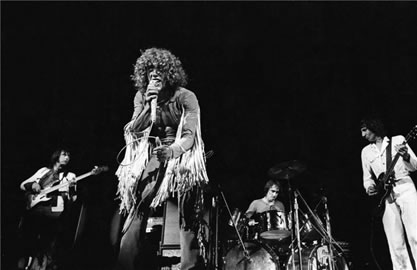
By 1970, the Who were widely considered one of the best and most popular live rock bands; Chris Charlesworth described their concerts as “leading to a kind of rock nirvana that most bands can only dream about”. They decided a live album would help demonstrate how different the sound at their gigs was to Tommy, and set about listening to the hours of recordings they had accumulated.
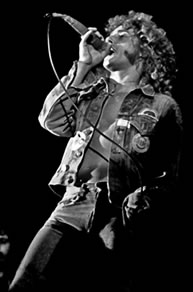 Townshend balked at the prospect of doing so, and demanded that all the tapes be burned. Instead, they booked two shows, one in Leeds on 14 February, and one in Hull the following day, with the intention of recording a live album. Technical problems from the Hull gig resulted in the Leeds gig being used, which became Live at Leeds. The album is viewed by several critics including The Independent, The Telegraph and the BBC, as one of the best live rock albums of all time.
Townshend balked at the prospect of doing so, and demanded that all the tapes be burned. Instead, they booked two shows, one in Leeds on 14 February, and one in Hull the following day, with the intention of recording a live album. Technical problems from the Hull gig resulted in the Leeds gig being used, which became Live at Leeds. The album is viewed by several critics including The Independent, The Telegraph and the BBC, as one of the best live rock albums of all time.
The Tommy tour included shows in European opera houses and saw the Who become the first rock act to play at the Metropolitan Opera House in New York City. In March the Who released the UK top 20 hit “The Seeker”, continuing a theme of issuing singles separate to albums. Townshend wrote the song to commemorate the common man, as a contrast to the themes on Tommy.
Lifehouse and Who’s Next
Tommy secured the Who are future and made them millionaires. The group reacted in different ways—Daltrey and Entwistle lived comfortably; Townshend was embarrassed at his wealth, which he felt was at odds with Meher Baba’s ideals, and Moon spent frivolously.
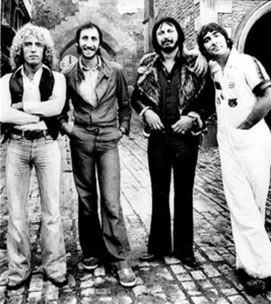 During the latter part of 1970, Townshend plotted a follow up Tommy: Lifehouse, which was to be a multi-media project symbolizing the relationship between an artist and his audience. He developed ideas in his home studio, creating layers of synthesizers, and the Young Vic theater in London was booked for a series of experimental concerts.
During the latter part of 1970, Townshend plotted a follow up Tommy: Lifehouse, which was to be a multi-media project symbolizing the relationship between an artist and his audience. He developed ideas in his home studio, creating layers of synthesizers, and the Young Vic theater in London was booked for a series of experimental concerts.
Townshend approached the gigs with optimism; the rest of the band were just happy to be gigging again. Eventually, the others complained to Townshend that the project was too complicated and they should simply record another album. Things deteriorated until Townshend had a nervous breakdown and abandoned Lifehouse.
Entwistle was the first member of the group to release a solo album, Smash Your Head Against the Wall, in May 1971.
Recording at the Record Plant in New York City in March 1971 was abandoned when Lambert’s addiction to hard drugs interfered with his ability to produce. The group restarted with Glyn Johns in April. The album was mostly Lifehouse material, with one unrelated song by Entwistle, “My Wife”, and was released as Who’s Next in August. The album reached No. 1 in the UK and No. 4 in the US. “Baba O’Riley” and “Won’t Get Fooled Again” are early examples of synthesizer use in rock, featuring keyboard sounds generated in real time by a Lowrey organ; on “Won’t Get Fooled Again”, it was further processed through a VCS3 synthesizer. The synthesizer intro to “Baba O’Riley” was programmed based on Meher Baba’s vital stats, and the track featured a violin solo by Dave Arbus. The album was a critical and commercial success, and has been certified 3x platinum by the RIAA. The Who continued to issue Lifehouse-related material over the next few years, including the singles “Let’s See Action”, “Join Together” and “Relay”.
The band went back on tour, and “Baba O’ Riley” and “Won’t Get Fooled Again” became live favorites. In November they performed at the newly opened Rainbow Theatre in London for three nights, continuing in the US later that month, where Robert Hilburn of the Los Angeles Times described the Who as “the Greatest Show on Earth”. The tour was slightly disrupted at the Civic Auditorium in San Francisco on 12 December when Moon passed out over his kit after overdosing on brandy and barbiturates. He recovered and completed the gig, playing to his usual strength
Quadrophenia, Tommy film and The Who by Numbers
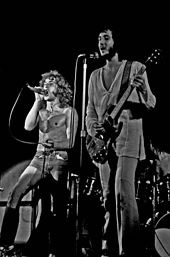 After touring Who’s Next, and needing time to write a follow-up, Townshend insisted that the Who take a lengthy break, as they had not stopped touring since the band started. There was no group activity until May 1972, when they started working on a proposed new album, Rock Is Dead—Long Live Rock!, but, unhappy with the recordings, abandoned the sessions. Tensions began to emerge as Townshend believed Daltrey just wanted a money-making band and Daltrey thought Townshend’s projects were getting pretentious.
After touring Who’s Next, and needing time to write a follow-up, Townshend insisted that the Who take a lengthy break, as they had not stopped touring since the band started. There was no group activity until May 1972, when they started working on a proposed new album, Rock Is Dead—Long Live Rock!, but, unhappy with the recordings, abandoned the sessions. Tensions began to emerge as Townshend believed Daltrey just wanted a money-making band and Daltrey thought Townshend’s projects were getting pretentious.
Moon’s behavior was becoming increasingly destructive and problematic through excessive drinking and drugs use, and a desire to party and tour. Daltrey performed an audit of the group’s finances and discovered that Lambert and Stamp had not kept sufficient records. He believed them to be no longer effective managers, which Townshend and Moon disputed. The painful dissolution of the managerial and personal relationships are recounted in James D. Cooper’s 2014 retrospective documentary, Lambert & Stamp. Following a short European tour, the remainder of 1972 was spent working on an orchestral version of Tommy with Lou Reizner.
By 1973, the Who turned to recording the album Quadrophenia about mod and its subculture, set against clashes with Rockers in early 1960s Britain. The story is about a boy named Jimmy, who undergoes a personality crisis, and his relationship with his family, friends and mod culture. The music features four themes, reflecting the four personalities of the Who. Townshend played multi-tracked synthesizers, and Entwistle played several overdubbed horn parts. By the time the album was being recorded, relationships between the band and Lambert and Stamp had broken down irreparably, and Bill Curbishley replaced them. The album was the Who’s highest charting, peaking at No. 2 in both the UK and US.
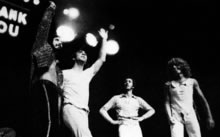 The Quadrophenia tour started in Stoke on Trent in October and was immediately beset with problems. Daltrey resisted Townshend’s wish to add Joe Cocker’s keyboardist Chris Stainton (who played on the album) to the touring band. As a compromise, Townshend assembled the keyboard and synthesizer parts on backing tapes, as such a strategy had been successful with “Baba O’Riley” and “Won’t Get Fooled Again”. Unfortunately, the technology was not sophisticated enough to deal with the demands of the music; added to this issue, tour rehearsals had been interrupted due to an argument that culminated in Daltrey punching Townshend and knocking him out cold. At a gig in Newcastle, the tapes completely malfunctioned, and an enraged Townshend dragged sound-man Bob Pridden on-stage, screamed at him, kicked all the amps over and partially destroyed the backing tapes. The show was abandoned for an “oldies” set, at the end of which Townshend smashed his guitar and Moon kicked over his drumkit. The Independent described this gig as one of the worst of all time.
The Quadrophenia tour started in Stoke on Trent in October and was immediately beset with problems. Daltrey resisted Townshend’s wish to add Joe Cocker’s keyboardist Chris Stainton (who played on the album) to the touring band. As a compromise, Townshend assembled the keyboard and synthesizer parts on backing tapes, as such a strategy had been successful with “Baba O’Riley” and “Won’t Get Fooled Again”. Unfortunately, the technology was not sophisticated enough to deal with the demands of the music; added to this issue, tour rehearsals had been interrupted due to an argument that culminated in Daltrey punching Townshend and knocking him out cold. At a gig in Newcastle, the tapes completely malfunctioned, and an enraged Townshend dragged sound-man Bob Pridden on-stage, screamed at him, kicked all the amps over and partially destroyed the backing tapes. The show was abandoned for an “oldies” set, at the end of which Townshend smashed his guitar and Moon kicked over his drumkit. The Independent described this gig as one of the worst of all time.
The US tour started on 20 November at the Cow Palace in Daly City, California; Moon passed out during “Won’t Get Fooled Again” and during “Magic Bus”. Townshend asked the audience, “Can anyone play the drums?—I mean somebody good.” An audience member, Scot Halpin, filled in for the rest of the show. After a show in Montreal, the band (except for Daltrey, who retired to bed early) caused so much damage to their hotel room, including destroying an antique painting and ramming a marble table through a wall, that federal law enforcement arrested them.
By 1974, work had begun in earnest on a Tommy film. Stigwood suggested Ken Russell as director, whose previous work Townshend had admired. The film featured a star-studded cast, including the band members. David Essex auditioned for the title role, but the band persuaded Daltrey to take it. The cast included Ann-Margret, Oliver Reed, Eric Clapton, Tina Turner, Elton John and Jack Nicholson. Townshend and Entwistle worked on the soundtrack for most of the year, handling the bulk of the instrumentation. Moon had moved to Los Angeles, so they used session drummers, including Kenney Jones. Elton John used his own band for “Pinball Wizard”. Filming was from April until August. 1500 extras appeared in the “Pinball Wizard” sequence.
The film premiered on 18 March 1975 to a standing ovation. Townshend was nominated for the Academy Award for Best Original Score. Tommy was shown at the 1975 Cannes Film Festival, but not in the main competition. It won the award for Rock Movie of the Year in the First Annual Rock Music Awards and generated over $2 million in its first month. The soundtrack reached number two on the Billboard charts.
Work on Tommy took up most of 1974, and live performances by the Who were restricted to a show in May at the Valley, the home of Charlton Athletic, in front of 80,000 fans, and a few dates at Madison Square Garden in June. Towards the end of the year, the group released the out-takes album Odds & Sods, which featured several songs from the aborted Lifehouse project.
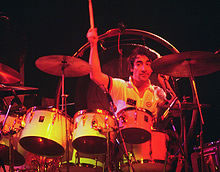 In 1975, Daltrey and Townshend disagreed about the band’s future and criticized each other via interviews in the music paper New Musical Express. Daltrey was grateful that the Who had saved him from a career as a sheet-metal worker and was unhappy at Townshend not playing well; Townshend felt the commitment of the group prevented him from releasing solo material. The next album, The Who by Numbers, had introspective songs from Townshend that dealt with disillusionment such as “However Much I Booze” and “How Many Friends”; they resembled his later solo work. Entwistle’s “Success Story” gave a humorous look at the music industry, and “Squeeze Box” was a hit single. The group toured from October, playing little new material and few Quadrophenia numbers, and reintroducing several from Tommy. The American leg of the tour began in Houston to a crowd of 18,000 at The Summit Arena, and was supported by Toots and the Maytals. On 6 December 1975, the Who set the record for largest indoor concert at the Pontiac Silverdome, attended by 78,000.
In 1975, Daltrey and Townshend disagreed about the band’s future and criticized each other via interviews in the music paper New Musical Express. Daltrey was grateful that the Who had saved him from a career as a sheet-metal worker and was unhappy at Townshend not playing well; Townshend felt the commitment of the group prevented him from releasing solo material. The next album, The Who by Numbers, had introspective songs from Townshend that dealt with disillusionment such as “However Much I Booze” and “How Many Friends”; they resembled his later solo work. Entwistle’s “Success Story” gave a humorous look at the music industry, and “Squeeze Box” was a hit single. The group toured from October, playing little new material and few Quadrophenia numbers, and reintroducing several from Tommy. The American leg of the tour began in Houston to a crowd of 18,000 at The Summit Arena, and was supported by Toots and the Maytals. On 6 December 1975, the Who set the record for largest indoor concert at the Pontiac Silverdome, attended by 78,000.
On 31 May 1976, they played a second concert at the Valley which was listed in the Guinness Book of Records as the world’s loudest concert at over 120 dB. Townshend had become fed up of touring. But Entwistle considered live performance to be at a peak.
Who Are You and Moon’s death
After the 1976 tour, Townshend took most of the following year off to spend time with his family. He discovered that former Beatles and Rolling Stones manager Allen Klein had bought a stake in his publishing company. A settlement was reached, but Townshend was upset and disillusioned that Klein had attempted to take ownership of his songs. Townshend went to the Speakeasy where he met the Sex Pistols’ Steve Jones and Paul Cook, fans of the Who. After leaving, he passed out in a doorway, where a policeman said he would not be arrested if he could stand and walk. The events inspired the title track of the next album, Who Are You.
The group reconvened in September 1977, but Townshend announced there would be no live performances for the immediate future, a decision that Daltrey endorsed. By this point, Moon was so unhealthy that the Who conceded it would be difficult for him to cope with touring. The only gig that year was an informal show on 15 December at the Gaumont State Cinema in Kilburn, London, filmed for the documentary, The Kids Are Alright. The band had not played for 14 months, and their performance was so weak that the footage was unused. Moon’s playing was particularly lacklustre and he had gained a lot of weight, though Daltrey later said, “even at his worst, Keith Moon was amazing.”
Recording of Who Are You started in January 1978. Daltrey clashed with Johns over the production of his vocals, and Moon’s drumming was so poor that Daltrey and Entwistle considered firing him. Moon’s playing improved, but on one track, “Music Must Change”, he was replaced as he could not play in 6/8 time. In May, the Who filmed another performance at Shepperton Sound Studios for The Kids Are Alright. This performance was strong, and several tracks were used in the film. It was the last gig Moon performed with the Who.
The album was released on 18 August, and became their biggest and fastest seller to date, peaking at No. 6 in the UK and No. 2 in the US.Instead of touring, Daltrey, Townshend and Moon did a series of promotional television interviews, and Entwistle worked on the soundtrack for The Kids Are Alright.
On 6 September, Moon attended a party held by Paul McCartney to celebrate Buddy Holly’s birthday. Returning to his flat, Moon took 32 tablets of clomethiazole which had been prescribed to combat his alcohol withdrawal. He passed out the following morning and was discovered dead later that day.
1978–1983
The day after Moon’s death, Townshend issued the statement: “We are more determined than ever to carry on, and we want the spirit of the group to which Keith contributed so much to go on, although no human being can ever take his place.” Kenney Jones, of the Small Faces and the Faces, replaced Moon in November 1978. John “Rabbit” Bundrick joined the live band as an unofficial keyboardist. On 2 May 1979, the Who returned to the stage with a concert at the Rainbow Theatre, followed by the Cannes Film Festival in France and dates at Madison Square Garden in New York.
The Quadrophenia film was released that year. It was directed by Franc Roddam in his feature-directing début, and had straightforward acting rather than musical numbers as in Tommy. John Lydon was considered as Jimmy, but the role went to Phil Daniels. Sting played Jimmy’s friend and fellow mod, the Ace Face. The soundtrack was Jones’ first appearance on a Who record, performing on newly written material not on the original album. The film was a critical and box office success in the UK and appealed to the growing mod revival movement. The Jam were influenced by the Who, and critics noticed a similarity between Townshend and the group’s leader, Paul Weller.
The Kids Are Alright was also completed in 1979. It was a retrospective of the band’s career, directed by Jeff Stein. The film included footage of the band at Monterey, Woodstock and Pontiac, and clips from the Smothers Brothers’ show and Russell Harty Plus. Moon had died one week after seeing the rough cut with Daltrey. The film contains the Shepperton concert, and an audio track of him playing over silent footage of himself was the last time he ever played the drums.
In December, the Who became the third band, after the Beatles and the Band, to grace the cover of Time. The article, by Jay Cocks, said the band had “outpaced, outlasted, outlived and outclassed” all of their rock band contemporaries.
Cincinnati tragedy
On 3 December 1979, a crowd crush at a Who gig at the Riverfront Coliseum, Cincinnati killed 11 fans. This was partly due to the festival seating, where the first to enter get the best positions. Some fans waiting outside mistook the band’s sound check for the concert, and attempted to force their way inside. As only a few entrance doors were opened, a bottleneck situation ensued with thousands trying to gain entry, and the crush became deadly.
The Who were not told until after the show because civic authorities feared crowd problems if the concert were cancelled. The band were deeply shaken upon learning of it and requested that appropriate safety precautions be taken in the future. The following evening, in Buffalo, New York, Daltrey told the crowd that the band had “lost a lot of family last night and this show’s for them”.
Change and break-up
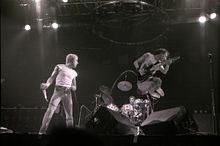 Daltrey took a break in 1980 to work on the film McVicar, in which he took the lead role of bank robber John McVicar. The soundtrack album is a Daltrey solo album, though all members of the Who are included in the supporting musicians, and was his most successful solo release.The Who released two studio albums with Jones as drummer, Face Dances (1981) and It’s Hard (1982).
Daltrey took a break in 1980 to work on the film McVicar, in which he took the lead role of bank robber John McVicar. The soundtrack album is a Daltrey solo album, though all members of the Who are included in the supporting musicians, and was his most successful solo release.The Who released two studio albums with Jones as drummer, Face Dances (1981) and It’s Hard (1982).
Face Dances produced a US top 20 and UK top ten hit with the single “You Better You Bet”, whose video was one of the first shown on MTV. Both Face Dances and It’s Hard sold well and the latter received a five-star review in Rolling Stone. The single “Eminence Front” from It’s Hard was a hit, and became a regular at live shows.
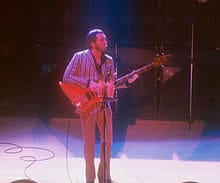 By this time Townshend had fallen into depression, wondering if he was no longer a visionary. He was again at odds with Daltrey and Entwistle, who merely wanted to tour and play hits and thought Townshend had saved his best songs for his solo album, Empty Glass (1980). Jones’ drumming style was very different from Moon’s and this drew criticism within the band. Townshend briefly became addicted to heroin before cleaning up early in 1982.
By this time Townshend had fallen into depression, wondering if he was no longer a visionary. He was again at odds with Daltrey and Entwistle, who merely wanted to tour and play hits and thought Townshend had saved his best songs for his solo album, Empty Glass (1980). Jones’ drumming style was very different from Moon’s and this drew criticism within the band. Townshend briefly became addicted to heroin before cleaning up early in 1982.
Townshend wanted the Who to stop touring and become a studio act; Entwistle threatened to quit, saying, “I don’t intend to get off the road … there’s not much I can do about it except hope they change their minds.” Townshend did not change his mind, and so the Who embarked on a farewell tour of the US and Canada with the Clash as support, ending in Toronto on 17 December 1982.
Townshend spent part of 1983 writing material for a Who studio album owed to Warner Bros. Records from a contract in 1980, but he found himself unable to generate music appropriate for the Who and at the end of 1983 paid for himself and Jones to be released from the contract. On 16 December 1983, Townshend announced at a press conference that he was leaving the Who, effectively ending the band.
After the Who break-up, Townshend focused on solo albums such as White City: A Novel (1985), The Iron Man (1989, featuring Daltrey and Entwistle and two songs credited to the Who), and Psychoderelict (1993).
Reunions
In July 1985, the Who performed at Live Aid at Wembley Stadium, London. The BBC transmission truck blew a fuse during the set, temporarily interrupting the broadcast. At the 1988 Brit Awards, at the Royal Albert Hall, the band was given the British Phonographic Industry’s Lifetime Achievement Award. The short set they played there was the last time Jones played with the Who.
1989 tour
In 1989, the band embarked on a 25th-anniversary The Kids Are Alright reunion tour with Simon Phillips on drums and Steve “Boltz” Bolton as a second guitarist. Townshend had announced in 1987 that he suffered from tinnitus and alternated acoustic, rhythm, and lead guitar to preserve his hearing. Their two shows at Sullivan Stadium in Foxborough, Massachusetts, sold 100,000 tickets in less than eight hours, beating previous records set there by U2 and David Bowie. The tour was briefly marred at a gig in Tacoma, Washington, where Townshend injured his arm on-stage. Some critics disliked the tour’s over-produced and expanded line-up, calling it “The Who on Ice”; Stephen Thomas Erlewine at AllMusic said the tour “tarnished the reputation of the Who almost irreparably”. The tour included most of Tommy and included such guests as Phil Collins, Billy Idol and Elton John. A 2-CD live album, Join Together, was released in 1990.
Partial reunions
In 1990, the Who were inducted into the Rock and Roll Hall of Fame. The group have a featured collection in the hall’s museum, including one of Moon’s velvet suits, a Warwick bass of Entwistle’s, and a drumhead from 1968.
In 1991, the Who recorded a cover of Elton John’s “Saturday Night’s Alright for Fighting” for the tribute album Two Rooms: Celebrating the Songs of Elton John & Bernie Taupin. It was the last studio recording to feature Entwistle. In 1994, Daltrey turned 50 and celebrated with two concerts at New York’s Carnegie Hall. The shows included guest spots by Entwistle and Townshend. Although all three surviving original members of the Who attended, they appeared on stage together only during the finale, “Join Together”, with the other guests. Daltrey toured that year with Entwistle, Zak Starkey on drums and Simon Townshend filling in for his brother as guitarist.
Re-formation
Revival of Quadrophenia
In 1996, Townshend, Entwistle and Daltrey performed Quadrophenia with guests and Starkey on drums at Hyde Park. The performance was narrated by Daniels, who had played Jimmy in the 1979 film. Despite technical difficulties the show led to a six-night residency at Madison Square Garden and a US and European tour through 1996 and 1997. Townshend played mostly acoustic guitar, but eventually was persuaded to play some electric. In 1998, VH1 ranked the Who ninth in their list of the “100 Greatest Artists of Rock ‘n’ Roll”.
Charity shows and Entwistle’s death
In late 1999, the Who performed as a five-piece for the first time since 1985, with Bundrick on keyboards and Starkey on drums. The first show in Las Vegas at the MGM Grand Garden Arena was partially broadcast on TV and the Internet and released as the DVD The Vegas Job. They then performed acoustic shows at Neil Young’s Bridge School Benefit at the Shoreline Amphitheatre in Mountain View, California, followed by gigs at the House of Blues in Chicago and two Christmas charity shows at the Shepherds Bush Empire in London. Critics were delighted to see a rejuvenated band with a basic line-up comparable to the tours of the 1960s and 1970s. Andy Greene in Rolling Stone called the 1999 tour better than the final one with Moon in 1976.
The band toured the US and UK from June to October 2000, to generally favorable reviews, culminating in a charity show at the Royal Albert Hall for the Teenage Cancer trust with guest performances from Paul Weller, Eddie Vedder, Noel Gallagher, Bryan Adams and Nigel Kennedy. Stephen Tomas Erlewine described the gig as “an exceptional reunion concert”. In 2001 the band performed the Concert for New York City at Madison Square Garden for families of firefighters and police who had lost their lives following the September 11 attacks on the World Trade Center, and were honored with a Grammy Lifetime Achievement Award.
The Who played concerts in the UK in early 2002 in preparation for a full US tour. On 27 June, the day before the first date, Entwistle was found dead of a heart attack at 57 at the Hard Rock Hotel in Las Vegas. Cocaine was a contributing factor.
After Entwistle: Tours and Endless Wire
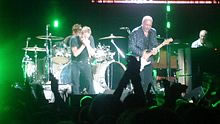 Entwistle’s son, Christopher, gave a statement supporting the Who’s decision to carry on. The US tour began at the Hollywood Bowl with touring bassist Pino Palladino. Townshend dedicated the show to Entwistle, and ended with a montage of pictures of him. The tour lasted until September. The loss of a founding member of the Who caused Townshend to re-evaluate his relationship with Daltrey, which had been strained over the band’s career. He decided their friendship was important, and this ultimately led to writing and recording new material.
Entwistle’s son, Christopher, gave a statement supporting the Who’s decision to carry on. The US tour began at the Hollywood Bowl with touring bassist Pino Palladino. Townshend dedicated the show to Entwistle, and ended with a montage of pictures of him. The tour lasted until September. The loss of a founding member of the Who caused Townshend to re-evaluate his relationship with Daltrey, which had been strained over the band’s career. He decided their friendship was important, and this ultimately led to writing and recording new material.
To combat bootlegging, the band began to release the Encore Series of official soundboard recordings via themusic.com. An official statement read: “to satisfy this demand they have agreed to release their own official recordings to benefit worthy causes”.
In 2004, the Who released “Old Red Wine” and “Real Good Looking Boy” (with Palladino and Greg Lake, respectively, on bass) on a singles anthology, The Who: Then and Now, and went on an 18-date tour of Japan, Australia, the UK and the US, including a return appearance at the Isle of Wight. Later that year, Rolling Stone ranked the Who No. 29 on their list of the 100 Greatest Artists of All Time.
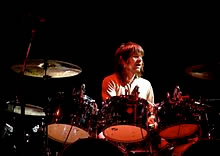 The Who announced in 2005 that they were working on a new album. Townshend posted a novella called The Boy Who Heard Music on his blog, which developed into a mini-opera called Wire & Glass, forming the basis for the album. Endless Wire, released in 2006, was the first full studio album of new material since 1982’s It’s Hard and contained the band’s first mini-opera since “Rael” in 1967. The album reached No. 7 in the US and No. 9 in the UK. Starkey was invited to join Oasis in April 2006 and the Who in November 2006, but he declined and split his time between the two.
The Who announced in 2005 that they were working on a new album. Townshend posted a novella called The Boy Who Heard Music on his blog, which developed into a mini-opera called Wire & Glass, forming the basis for the album. Endless Wire, released in 2006, was the first full studio album of new material since 1982’s It’s Hard and contained the band’s first mini-opera since “Rael” in 1967. The album reached No. 7 in the US and No. 9 in the UK. Starkey was invited to join Oasis in April 2006 and the Who in November 2006, but he declined and split his time between the two.
In November 2007, the documentary Amazing Journey: The Story of the Who was released, featuring unreleased footage of the 1970 Leeds appearance and a 1964 performance at the Railway Hotel when the group were The High Numbers. Amazing Journey was nominated for a 2009 Grammy Award.
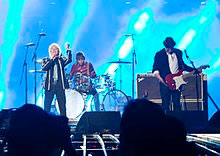 The Who toured in support of Endless Wire, including the BBC Electric Proms at the Roundhouse in London in 2006, headlining the 2007 Glastonbury Festival, a half-time appearance at the Super Bowl XLIV in 2010 and being the final act at the closing ceremony of the London 2012 Olympic Games.
The Who toured in support of Endless Wire, including the BBC Electric Proms at the Roundhouse in London in 2006, headlining the 2007 Glastonbury Festival, a half-time appearance at the Super Bowl XLIV in 2010 and being the final act at the closing ceremony of the London 2012 Olympic Games.
In November 2012, the Who released Live at Hull, an album of the band’s performance night after the Live at Leeds gig.
Quadrophenia and More
In 2010, the Who performed Quadrophenia with parts played by Vedder and Tom Meighan at the Royal Albert Hall as part of the Teenage Cancer Trust series of 10 gigs. A planned tour for early 2010 was jeopardized by the return of Townshend’s tinnitus. He experimented with an in-ear monitoring system that was recommended by Neil Young and his audiologist.
The Quadrophenia and More tour started in November 2012 in Ottawa with keyboardists John Corey, Loren Gold and Frank Simes, the latter of whom was also musical director. In February 2013, Starkey pulled a tendon and was replaced for a gig by Scott Devours who performed with less than four hours’ notice. The tour moved to Europe and the UK, and ended at the Wembley Arena in July 2013.
The Who Hits 50! and beyond
In October 2013, Townshend announced the Who would stage their final tour in 2015, performing in locations they have never played before. Daltrey clarified that the tour is unrelated to the band’s 50th anniversary—which occurred in 2013—and indicated that he and Townshend were considering recording new material but would be emphasizing their hits in their final stadium tour. Daltrey stated, “We can’t go on touring forever … it could be open-ended, but it will have a finality to it.”
In June 2014, Jones reunited with the Who at a charity gig for Prostate Cancer UK his Hurtwood Polo Club, alongside Jeff Beck, Procol Harum, and Mike Rutherford. Later that month, the Who announced plans for a world tour with a possible accompanying album. In September, the Who released the song “Be Lucky”, which was included on the compilation The Who Hits 50! in October. That November, the group released a virtual reality app co-designed by Daltrey’s son, Jamie, featuring events and images from the band’s history.
In June 2015, the Who headlined that year’s Hyde Park Festival, and two days later, the Glastonbury Festival. Townshend suggested to Mojo that it could be the group’s last UK gig. To coincide with The Who’s 50th anniversary, all studio albums, including the new compilation, The Who Hits 50!, were reissued on vinyl.
In September 2015, all remaining US tour dates were cancelled after Daltrey contracted viral meningitis. Then Townshend promised the band would come back “stronger than ever”.
On 11 June 2016 in Newport, England, The Who embarked on the Back to the Who Tour 51!, a new tour seen as a continuation of the previous year’s tour. The new tour included a return visit to the Isle of Wight Festival (at the Seaclose Park in Newport, England) on the opening date on 11 June 2016 and ended at the Empire Polo Grounds in Indio, CA on 16 October 2016 after thirteen concerts. In November 2016, The Who announced that 5 UK dates the following April (previously scheduled for that August and September), would include a full live performance of Tommy. The 5-date tour was renamed “2017 Tommy & More”, and is the first time that the band will play Tommy in full since 1989.
